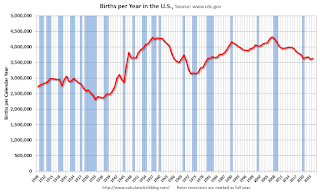
Provisional Birth Data Reveals Trends in U.S. Fertility Rates for 2024
Published: April 23, 2025 | Source: National Center for Health Statistics
The National Center for Health Statistics (NCHS) has released its provisional report detailing birth statistics for the United States in 2024. The data indicates a notable increase in the number of births, alongside significant shifts in reproductive trends among different age groups.
According to the report, the provisional number of births recorded in 2024 was 3,622,673, representing a 1% increase from the previous year, 2023. This slight uptick marks a deviation from the general trend observed over the past decade, wherein U.S. birth rates have largely been on the decline since peaking in 2007.
The general fertility rate for the year stood at 54.6 births per 1,000 females in the 15–44 age group, with a marginal increase of less than 1% from 2023. Meanwhile, the total fertility rate, which reflects the number of births per 1,000 women, was recorded at 1,626.5 for 2024, again showing an increase of less than 1%. These figures suggest a stabilization in birth rates for certain demographics, despite the overarching trend of declining fertility.
A more granular analysis of the data reveals contrasting trends among specific age cohorts. Birth rates for teenagers aged 15-19 fell by 3%, settling at 12.7 births per 1,000 females within that age range. This decline is consistent with reductions observed in younger subgroups—15-17 years saw a 4% drop, while older teenagers aged 18-19 experienced a 3% decrease.
Conversely, birth rates for women in the age groups of 25-44 experienced increases, reflecting a growing tendency for women to have children later in life. Notably, birth rates remained unchanged for females aged 10-14 and for those aged 45-49. This shift towards delayed childbearing among older women indicates a changing societal sentiment regarding family planning and career priorities.
The NCHS report also highlights the remarkable and sustained decline in teenage pregnancies, which has been a significant factor in the overall reduction of U.S. birth rates over the last decade. This trend underscores the effectiveness of public health initiatives aimed at improving sexual education and access to contraceptives among adolescents.
For a comprehensive analysis of the data, including long-term trends, access the full report available here.
Overall, while 2024 shows a modest increase in birth rates, the diverging trends across age groups suggest a continued evolution of reproductive patterns in the United States, reflecting broader shifts in societal norms and individual choices regarding family planning.


